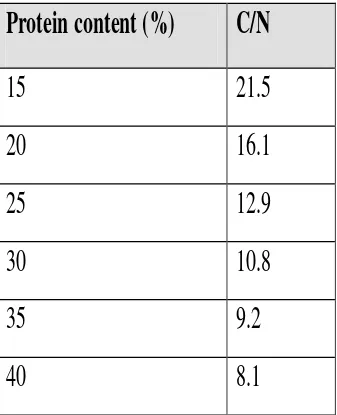Professor Yoram Avnimelech
(Yoram)
Technion, Israel Institute of Technology Haifa, Israel
Important fact to remember
• Fish (shrimp) are fed with a lot of feed
• About 70-80% of it remains in the pond, in the water or the sediment.
What are the outcomes??
• 1. We waste Feed/Money (Quite a lot!)
• 2. Toxic residues (Sulphides, Ammonia
etc) accumulate.
• 3. Fish growth is affected.
What can we do??
• No Intensification (loose income, not being
able to raise production).
• Use industrial RAS (Recycling Aquaculture systems) Quite expensive
• Use biofloc technology
What is BFT?
• 1. We limit water exchange
• 2. Organic residues accumulate
• 3. We mix and aerate.
• 4 Ideal conditions for bacteria
• 5 Bacteria control
water quality.
How does it work
• Heterotrophic bacteria feed on organic
matter.
• BASICALLY
• C6H12O6 + 6O 2 6 CO2+ Energy
• BUT Bacteria are made of protein so they
need nitrogen (We will discuss this later)
• They use the Chemical energy in organic
substrates. Consume oxygen (Though there are anaerobic bacteria).
Conditions for bacteria
• 1. There is a lot of available food for bacteria. The pond is loaded with organic residues.
• 2. The pond is fully aerated (needed for proper fish growth).
• 3. The pond is well mixed (typically 24 hours a day)
• 4. The number of bacteria in such ponds is 106 up to 109 Bacteria in one cm3!!!!
• The pond becomes a biotechnological
The nitrogen syndrome
• Ammonium is excreted
by fish
The Major problem: Inorganic nitrogen. Ammonia, NH3 and nitrite, NO2
Maximal safe NH3 concentration for shrimp is 0.2 mg/l
At neutral pH maximal total NH4 concentration = ~ 2 mg/l
NH3)/(NH4) ( = Kd/(H+)
Manipulating bacteria
• Normally, there is enough
nitrogen in ponds for new cell production.
• BUT we can add carbon rich and protein poor material
(carbo-hydrate, CH), such as starch or cellulose (flour,
molasses, cassawa etc.
• Then, there is a need for nitrogen.
• The way to do it: Keep C/N ratio higher than 10
Bacteria have to produce protein. If the substrate is mostly carbonaceous, they need to take nitrogen from
the water
Changes in TAN concentration in a suspension of pond bottom soil (2% dry soil) following the addition of glucose (TAN/glucose ratio of 1/20)*
Inorganic nitrogen control is
possible and predictable.
• EXAMPLES
Fish ponds in Israel
Over wintering of tilapia
Emergency treatment in shrimp ponds in
Thailand
Summary till now:
• 1. We know how to get active microbial system.
• 2. We know how to tell the bacteria to control water quality.
• 3. This enables to intensify production without the need to install special system.
• 4. As a by-product, bacteria produce large
amounts of protein (ca 60 and 600 kg/ha per day for shrimp and tilapia culture).
Can we feed fish or shrimp with
bacteria
• Bacteria are very small.
• Luckily, when we have a dense culture,
• They tend to form bioflocs, containing
BIOFLOC Systems
Each cm3 of floc plug contain
10-30 mg dry matter
Can we use this microbial activity?
• We will deal with this extensively.
• The microbes degrade the waste, part of it
to CO2 and about 50% to microbial
biomass.
• We can manipulate the microbial activity
toward the control of nitrogen in the pond.
• The bacteria makes an important part of
the food chain.
x40
Bio flocs are made of bacteria,
protozoa, etc. Typicaly their
Mixing and aeration are typical features of
bio-technological industry
Major Problems
1. We need more research
Starting
• Goal: Develop the biofloc system.
• In lined ponds, you start from almost zero.
• Before stocking, add organic matter (old feed, molasses, etc.)
Add N fertilizers, 0.5-2.5 mgN/l (5-25 kg/ha)
INOCULUM?
Often, just some soil from pond is enough (~50 kg/ha).
Development of biofloc system
• It may take a few weeks, depends on the biomass.
• First algae develop. Transition, foam formation then it get brown.
• Transition is fast with tilapia, longer with shrimp
• Add carbon if TAN is above ~2 mg/l
• Adding clay, wheat bran etc. serves as seeding for biofloc formation.
Feeding
• Feed C/N ratio ~ 15-25
• ADJUST ACCORDING TO TAN and NO2 LEVELS
• The total C/N is important. Feed with low protein pellets or with High protein pellets + Carbon?
• Still not clear. Advantages and disadvantages in
both. Need more experience
• In tilapia ponds, drain sludge 1-2 time daily. In
Monitoring
• Very important!!! This is your control
• Keep in computer and display graphs
• Normal aquaculture: Oxygen, T, pH,
alkalinity, ….
Bioflocs evaluation
• Imhoff cones: Measure following 15-20
minutes.
• In shrimp ponds 1-40 ml/l (Drain >15?)
• In fish ponds 2-100 ml/l (Drain >30?)
• Total Suspended solids, TSS:
• Not above 200-400 mg/l
• Volatile suspended solids, VSS
Responses to monitoring
• High ammonium: Raise carbohydrates,
reduce protein in feed. RESPOND QUICKLY.
• High nitrite: Check for low oxygen zones,
sludge accumulation, aerator placement.
Add carbon
• Low floc volume: you may add carbon
Belize 1.6 Ha PVC lined ponds
Letter from a shrimp farmer in Indonesia
We are so lucky that we are applying biofloc technology, as it was suggested on your book.
All of our neighboring ponds were already harvested
prematurely because of WSS.
So we are the only survivor on that area or region.
Thanks to your book- although we are still experimenting the quantity of molasses given for shrimps.
If we want to have C/N ratio of 20 then quantity of mollases needed are the same as the quantity of feeds.
Right now quantity feed of P3 & P4 are about 130 kg.
So right now we are targeting C/N ration between 12-15

